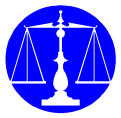Tribal Identifications and Characteristics of Dan
 The Tribe of Dan when it came out of Egypt with the rest of the Children of Israel was, after Judah, the most populous of Israelite Tribes with 62,700 males between the ages of 20 and 60 apart from women, children, and the elderly (Numbers 2;26).
The Tribe of Dan when it came out of Egypt with the rest of the Children of Israel was, after Judah, the most populous of Israelite Tribes with 62,700 males between the ages of 20 and 60 apart from women, children, and the elderly (Numbers 2;26).
The son of Dan was called "Hushim" (Genesis 46;23) who gave rise to the Danite clan known as Shuhami (Numbers 26;43). Symbols associated with the Tribe of Dan include a lion, snake, eagle, dragon, and griffin. A griffin is an imaginary creature with the wings and body of an eagle and the head of a lion. The Hyksos rulers of Egypt used a griffin as their symbol. The Hyksos were either Hebrews or a Band of Egyptian rulers who relied on Israelites in their forces and were heavily influenced by Hebraic and Canaanite culture.
Aholiab of the Tribe of Dan assisted Betzaleel of the Tribe of Judah in building the Tabernacle in the Wilderness (Exodus 31;2 6).
Character appraisals of Dan in tradition appear contradictory. One source (Talmud, Shabat 67) says that all the children of Dan were idolaters. It also says that Dan received the north side "whence darkness comes". A Midrash states that Samson the legendary judge hero had a Danite father and a mother from Judah whereas the future Messiah will have a father from Judah and a mother from Dan or from Nephtali (Genesis Rabah 98;13)..
The mother of Dan was Bilhah who also bore Nephtali. Dan and Nephtali are often linked with each other. Bilhah was the maidservant of Rachel mother of Benjamin and Joseph, and here too parallelisms are noticeable.
Eldad HaDani (ca.800 c.e.) quotes an old legend according to which the Tribe of Dan left the Land of Israel after the Ten Tribes separated themselves from Judah. The Northern Ten Tribes under Jeroboam ben Nebat warred against Judah in the south and so Dan rather than engage in a fratricidal struggle went into voluntary exile.
SAMSON was from the Tribe of Dan. Samson was an heroic saviour of superhuman strength given to him at moments of Divine inspiration.. He became the prototype for Hercules. In Greek Classical Mythology Hercules appears to frequently represent peregrinations of migrating Phoenicians and Israelites.
At first the Tribe of Dan received an inheritance around the area of Joppa (modern Jaffa- Tel Aviv). Most of the inheritance of Dan in the south was to be lost to the Amorites and Philistines and later regained by the Israelite Tribes of Ephraim and Judah BUT NOT DAN.
"And the seventh lot came out for the tribe of the children of Dan according to their families.
"And the coast of their inheritance was Zorah, and Eshtaol, and Irshemesh,
"And Shaalabbin, and Ajalon, and Jethlah,
"And Elon, and Thimnathah, and Ekron,
"And Eltekeh, and Gibbethon, and Baalath,
"And Jehud, and BeneBerak, and Gath rimmon,
"And Mejarkon, and Rakkon, with the border before Japho.
"And the coast of the children of Dan went out [(too little)] for them: therefore the children of Dan went up to fight against Leshem, and took it, and smote it with the edge of the sword, and possessed it, and dwelt therein, and called Leshem, Dan, after the name of Dan their father.
"This is the inheritance of the tribe of the children of Dan according to their families, these cities with their families" (Joshua 19;4048).
"And the Amorites forced the children of Dan into the mountain: for they would not suffer them to come down to the valley:
"But the Amorites would dwell in Mount Heres in Aijalon, and in Shaalbim: yet the hand of the house of Joseph prevailed, so that they became tributaries" (Judges 2;3435)..
We see from the above that the Tribe of Dan in the south was only successful in obtaining a portion of the inheritance it had been bequeathed when the Land was divided amongst the Tribes. We also saw that Dan was quite populous. Consequently many from the Tribe of Dan were to go elsewhere.
The Tribe of Dan was to launch forward and conquer an area in the Upper Galilee, another region in Cilicia (southeast Turkey), establish settlements in Anatolia, engage in an attempted invasion of Egypt, establish a base in Libya, conquer Greece, Cyprus, and Crete, and establish a presence in Bronze Age Scandinavia, Britain, and Ireland.
